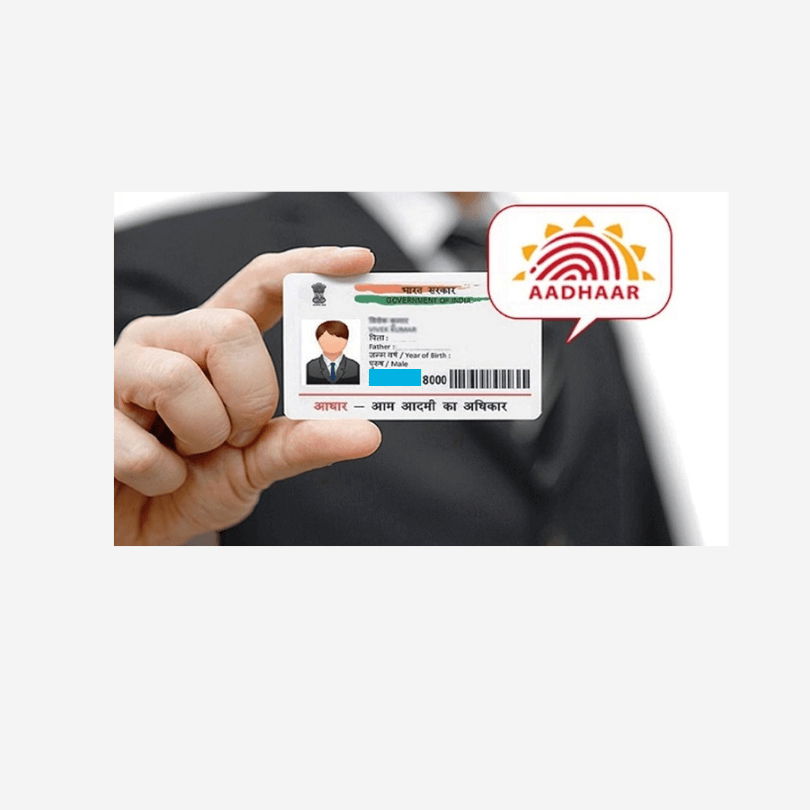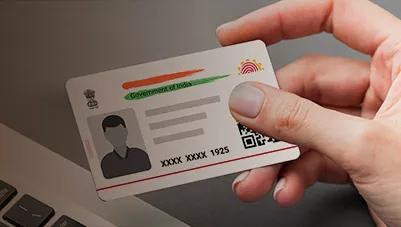Masked Aadhaar Image: How It Ensures Privacy and Security

In today's digital age, privacy and security are crucial. There is a strong push to use your Aadhaar number for identification. Aadhaar is a 12-digit ID on India's biometric database. It matches personal info with its holders. Though helpful for checking identification, it may also put you at risk of hacking and identity theft. This is where the masked Aadhaar image comes in, the picture being masked protects it without hampering usability.
This blog post will discuss four things. First, why one should mask the Aadhaar image? Second, how it prevents data leaks. Third, the difference between a masked and unmasked Aadhaar. Finally, how Pixl.ai can help with masking Aadhaar.
Why You Should Mask Your Aadhaar Image
It is your unique identification number that opens up much of your details. They trace it to several services, ranging from biometric data to even bank account details. If it gets to the wrong people the individual can easily be defrauded, or even have his identity stolen. A masked Aadhaar image is an efficient way to verify your Aadhaar card. It also protects your full Aadhaar number.
The masked Aadhaar that appears on the portal conceals the first eight digits of the Aadhaar number and shows the remaining four digits. This makes sure that even if someone is seeing or receiving your Aadhaar image, they would not be able to misuse the complete Aadhaar no. If you provide your Aadhaar card for KYC, use a masked Aadhaar to protect your details. This applies to any application or document upload. Data theft is common today. Simple measures, like hiding your Aadhaar, are good to take
Why an Aadhaar Image with Masking Can Save You from Data Breaches
Cybersecurity has become an area of worry in many companies and organizations due to privacy breaches. A data breach occurs when a person hacks an organization's computer. They access a restricted database and manipulate its information. To guard against such breaches one can use a masked Aadhaar image. A masked Aadhaar image hides most of the Aadhaar number. It reveals only the last four digits. It greatly reduces the risk of ID theft if someone seizes your Aadhaar card, either physically or online.
An increasing number of online services now accept the masked Aadhaar as a valid ID. So, it made perfect sense to let users share their masked Aadhaar for ID. But, we must not allow anyone to misuse the full Aadhaar number. If the Aadhaar number is leaked in the breach, the concealed numbers will mask it. This will keep the personal information safe. Masking your Aadhaar image makes it hard to get your full Aadhaar number. This reduces the risk of a data breach.
Masked Aadhaar Image vs. Regular Aadhaar: What’s the Difference?
A masked Aadhaar image hides the Aadhaar number. An ordinary Aadhaar card does not. That's the only difference. In a normal Aadhaar card, all twelve digits are visible on the card. This makes it easier for people to misuse your personal information if your Aadhaar card is shared or leaked.
However, a masked Aadhaar reveals only the last four digits of the Aadhaar number of the person. The first eight digits are masked with ‘XXXX’ which completely hides most of your Aadhaar number but can be used in the same way as the original document.
Here’s a quick comparison:
- Regular Aadhaar : Keeps full Aadhaar number, thus the higher risk in case it is disclosed.
- Masked Aadhaar : They anonymize the first eight digits of the Aadhaar number; fairly less susceptible to identity theft.
The second benefit of a masked Aadhaar is that it ensures that the Aadhaar Act is followed to the letter. More places now accept a masked Aadhaar for KYC checks. It's a safer way to share your Aadhaar than using the actual card.
Here’s how Pixl helps simplify Aadhaar masking
- Real-time Masking : Pixl, therefore, operates in real-time and that means that once an Aadhaar number appears in any text, our solution will be ready to mask it.
- Batch Processing : To organizations dealing with large numbers of papers, Pixl’s resume integrating feature to apply Aadhaar masking in large batches.
- API Integration : Luckily, there are APIs for Pixl that are easily consumable and can allow businesses to integrate Aadhaar masking back into whatever existing processes they currently use.
- High Accuracy : AI and machine learning prove to be error-free in detecting as well as masking Aadhaar numbers to avoid mistakes in Pixl.
For example, fintech, banking, and insurance industries are making customer data processing easier through Pixl’s Aadhaar masking solution to avoid the violation of privacy.
Conclusion: Security of Identity with Masked Image Aadhaar
Today, people are focused more than ever on their privacy and security; adopting a masked Aadhaar image is a rather effective strategy. Whether you’re providing an Aadhaar number for confirmation or using a site where you have to submit an Aadhaar copy, obscuring your Aadhaar number guarantees that personal details will not be compromised.
A masked Aadhaar is a protection against identity theft and breaches as well. It offers the same benefits as the standard Aadhaar card but to a certain level safeguards your Aadhaar number. But as more and more organizations allow masked Aadhaar for biometric comparison in various operations, including KYC, your data has never been safer.
Pixl.ai's advanced Aadhaar masking solutions make the process easy and fast for everyone, for both personal and commercial use. Pixl.ai uses OCR and AI in its platform. It guarantees high accuracy, compliance, and usability.
In today's world, data breaches are a concern. Simple practices, like using a masked Aadhaar, can help. They will save your data and keep you safe online





